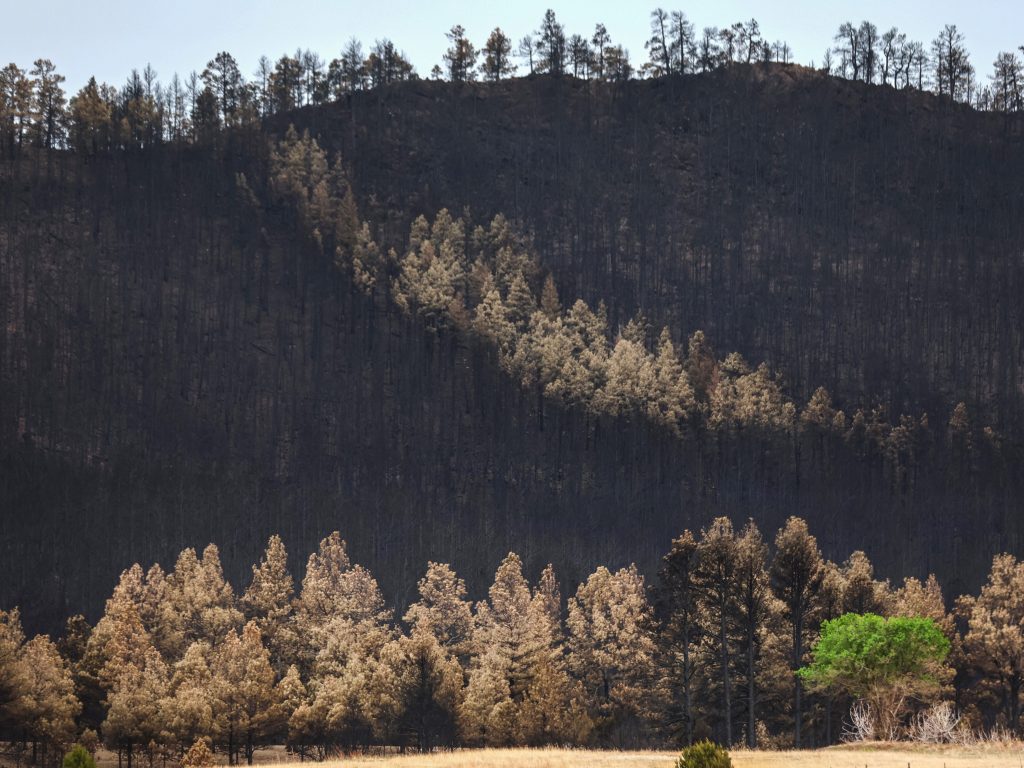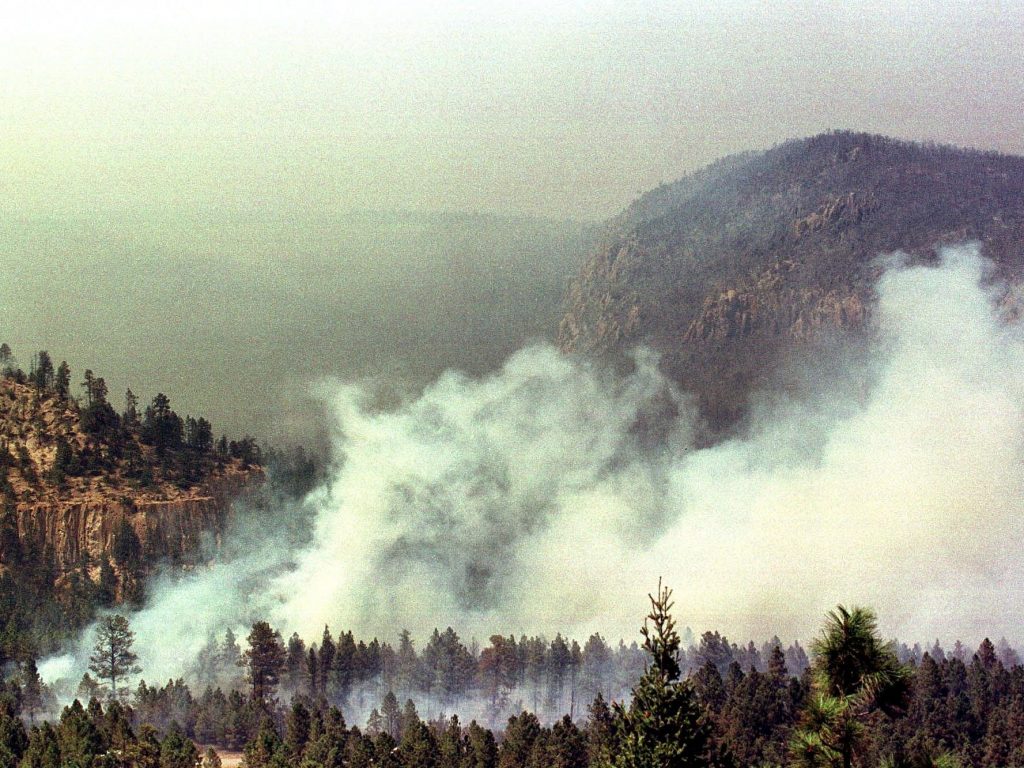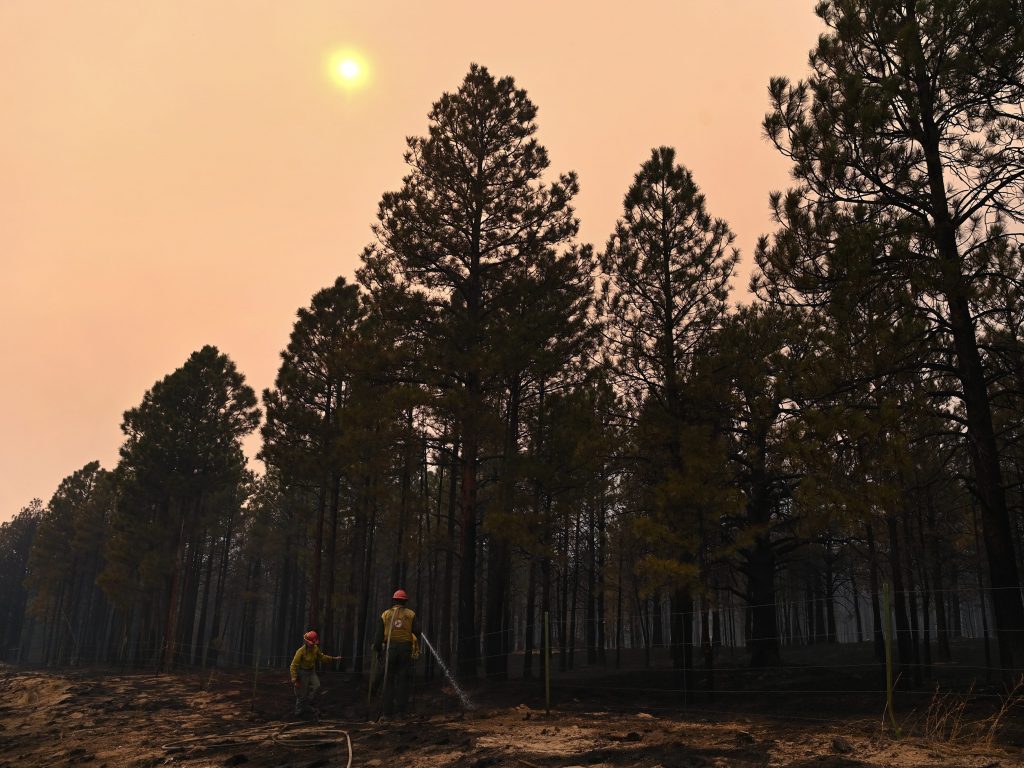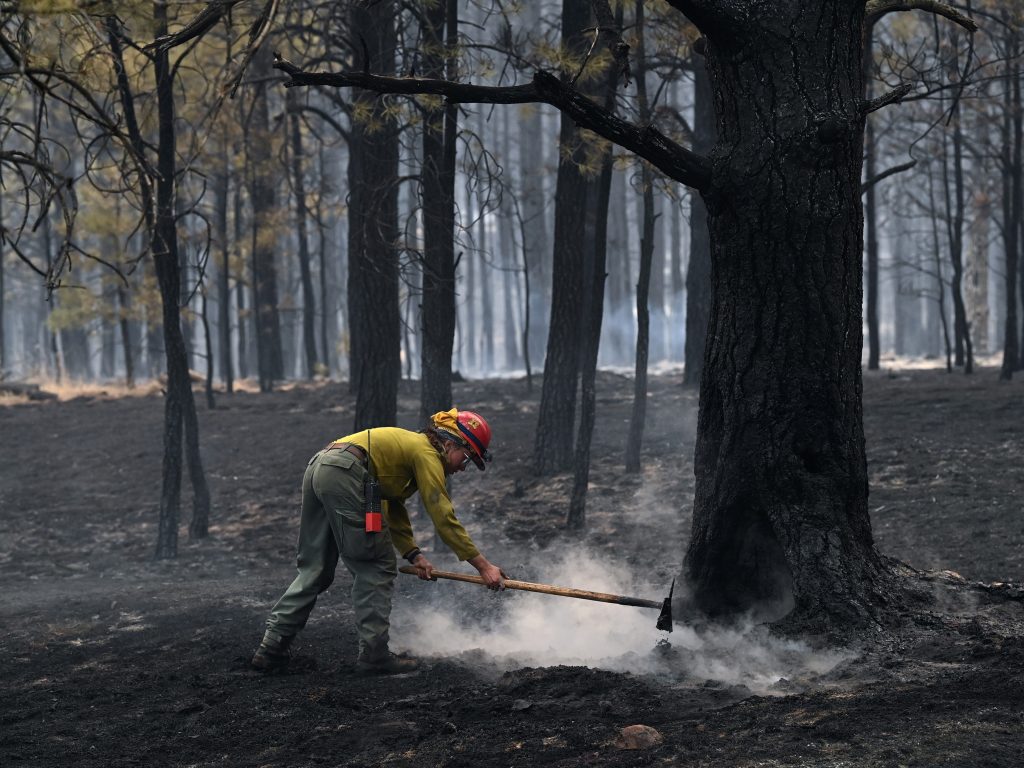- New Mexico's largest-ever wildfire began as intentional prescribed burns set by forest managers.
- In response to the wildfire, the US Forest Service temporarily halted planned burns nationwide.
- Planned fires reduce wildfire fuel, which means fires are smaller and less likely to get out of control.
Two fires that merged to create the largest blaze in New Mexico history have each been traced to prescribed burns set by forest managers to maintain forest health, according to federal investigators. In response, the US Forest Service temporarily halted the practice. But fire experts worry abandoning the vital forest management tool would be catastrophic, since it reduces the risk of out-of-control fires, while restoring the ecological health of the forest.
The Hermits Peak fire started as a prescribed fire by crews with the US Forest Service on the afternoon of April 6. By 4:30 p.m., the Forest Service declared it a wildfire. Investigators determined that on April 22, strong wind gusts fanned the fire, merging it with the nearby Calf Canyon fire, also started intentionally to remove debris, which can fuel extremely hot and destructive wildfires if left unattended.
So far, the Calf Canyon and Hermits Peak fire has destroyed at least 330 homes and caused $132 million in damage. And it's highlighting how climate change complicates fighting fire with fire.
New Mexico fire prompts nationwide halt on planned burns

New Mexico Gov. Michelle Lujan Grisham called for a halt on prescribed burns across the state last month. "It is critical that federal agencies update and modernize these practices in response to a changing climate," Lujan Grisham said in a statement.
The US Forest Service followed by suspending prescribed fire operations nationwide while it conducts a review. The agency's chief, Randy Moore, said any "lessons learned and any resulting program improvements will be in place prior to resuming prescribed burning," in a statement.
Fire experts like James Biggs, who teaches wildfire ecology and fire behavior at New Mexico Highlands University, stress that regularly doing planned burns is important for managing wildfires. States should expand their intentional burn programs — not decrease them. "There are thousands of prescribed burns in the West every year, and they're done to improve these conditions in the forest in an attempt to reduce the threat of these large, catastrophic events," Biggs told NPR.
The Forest Service said it ignites 4,500 prescribed fires annually and in "99.84% of cases, prescribed fires go as planned."
Every prescribed fire has a "prescription" — a specific plan for when and how the controlled fire will be set, so it doesn't pose a threat to the public. Prescribed burns don't prevent wildfires, according to Stephen Pyne, a fire historian at Arizona State University. "Really, you're substituting a manageable fire for an unmanageable fire. When planned fires happen, you're burning under conditions that allow you to contain it," Pyne told Insider.
The practice involves deliberately setting fires to mimic small fires that would have naturally occurred on the landscape, ridding the forests of dead leaves, tree limbs, and other wildfire fuel. According to Pyne, without prescribed burns, flammable fuel builds up, priming the tightly packed forest to burst into flames. Planned fires reduce fuel that would otherwise be available for a wildfire to consume, resulting in smaller fires that don't get out of control as often, Pyne said.
An out-of-control planned burn in 2000 spurred backlash
Prescribed burns have occasionally led to devastating blazes in New Mexico. In May 2000, a plan to burn 900 acres turned into a fire that scorched around 48,000, as the Cerro Grande Fire roared into New Mexico's Los Alamos, the associate director of the Government Accountability Office testified to Congress.

A crew from the National Park Service lit a prescribed burn on the evening of May 4, 2000, which quickly grew too large to control, due to high winds and drought conditions. It destroyed 235 homes and displaced more than 400 people, according to the Santa Fe New Mexican.
Prescribed burn operations nationwide suffered a blow after Cerro Grande, according to Pyne, and federal agencies became more risk averse about planned fires. New Mexico Sen. Pete V. Domenici was critical of what he called the "negligence,'' that led to the destruction at Cerro Grande, according to The New York Times.
"It was a political firestorm and made things difficult and more expensive," Pyne told Insider. After Cerro Grande, prescribed fires needed to comply with time-consuming requirements, like clean air permits.
"The prescribed fire program should not be judged by the events of the Cerro Grande Fire," according to a 2001 National Park Service report, which outlined a series of recommendations for making prescribed burns safer, such as federal agencies working together and sharing strategic plans about intentionally set fires.
Climate change makes prescribed burns tricky, but we still need them

Drier, hotter temperatures and strong wind gusts — like the ones New Mexico experienced earlier this year — are favorable for wildfires, according to Pyne. "Undoubtedly, climate change is affecting fires," he said, adding, "It's forcing us to rethink how we do it."
Blazes are arriving earlier in the year and staying later, meaning fire season is getting longer.
The key to a safe and effective planned burn is timing. In order to cope with changing climate, forest managers might have to adjust the windows in which they intentionally set fires, according to Pyne. "Instead of operating by a calendar, we need to think more about what are the actual conditions," he said.
"Fire in the landscape is not a precision tool — it's not like a blow torch or a candle or something you can just blow out or turn off," he said, adding, "It responds to its environment."
Despite the recent New Mexico fires, the vast majority of prescribed burns are conducted safely, Pyne added.
"The goal is to try to get fire in a form that we can manage and live with, and that can actually help us ride out the climate change pressures that we're experiencing."
